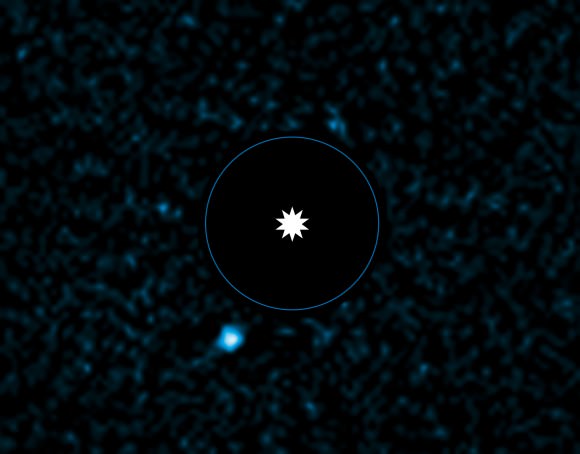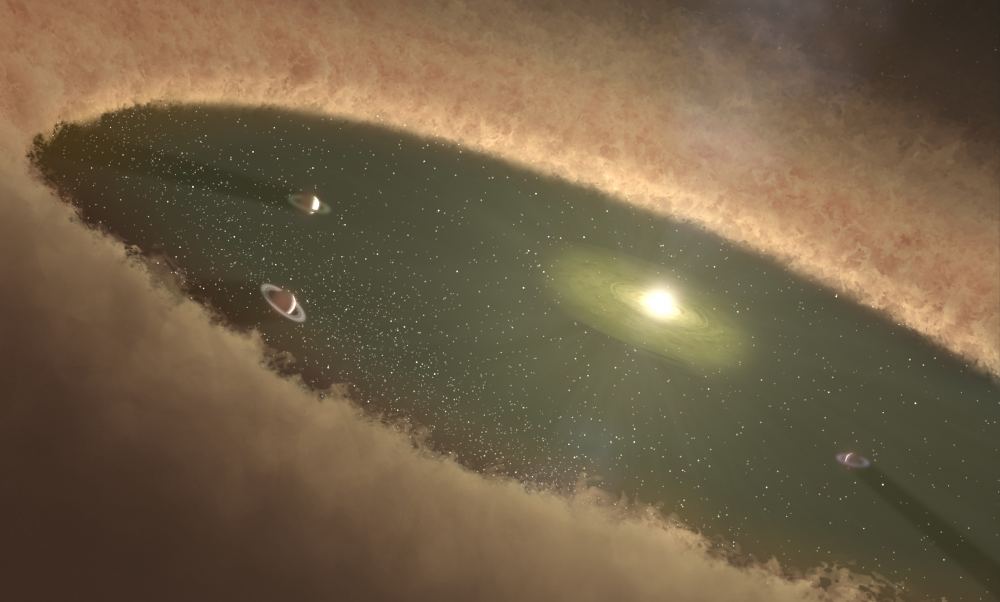This isn’t a clone of our Solar System, but it’s close enough. Scientists eagerly scrutinized a young star system called HD 95086 to learn more about how dust belts and giant planets grow up together. This is an important finding for our own neighborhood, where the gas giants of Jupiter, Saturn, Uranus and Neptune are also wedged between dusty areas.
“By looking at other star systems like these, we can piece together how our own Solar System came to be,” stated lead author Kate Su, an associate astronomer at the University of Arizona, Tucson.
The system is about 295 light-years from Earth, and is suspected to have two dust belts: a warmer one (similar to our asteroid belt) and a cooler one (similar to the Kuiper Belt that has icy objects.) The system is host to at least one planet that is five times the mass of Jupiter, and other planets could also be hiding between the dusty lanes. This planet, called HD 95086 b, was imaged by the European Southern Observatory’s Very Large Observatory in 2013.

The next step was a comparison study with another star system called HR 8799, which also has two dusty rings and in this case, at least four planets in between. These planets have also been caught on camera. Comparing the structure of the two systems indicates that HD 95086 may have more planets lurking for astronomers to discover.
“By knowing where the debris is, plus the properties of the known planet in the system, we can get an idea of what other kinds of planets can be there,” stated Sarah Morrison, a co-author of the paper and a PhD student at the University of Arizona. “We know that we should be looking for multiple planets instead of a single giant planet.”
The researchers presented their work at the Division for Planetary Science Meeting of the American Astronomical Society in Tucson, Arizona. A press release did not disclose publication plans or if the work was peer-reviewed.
Source: NASA

